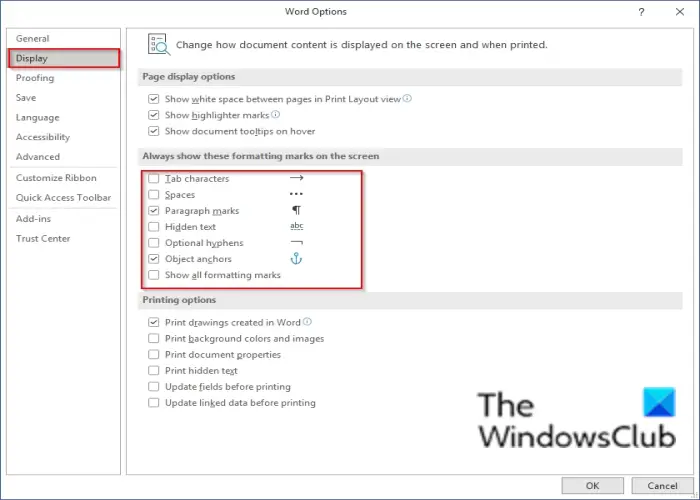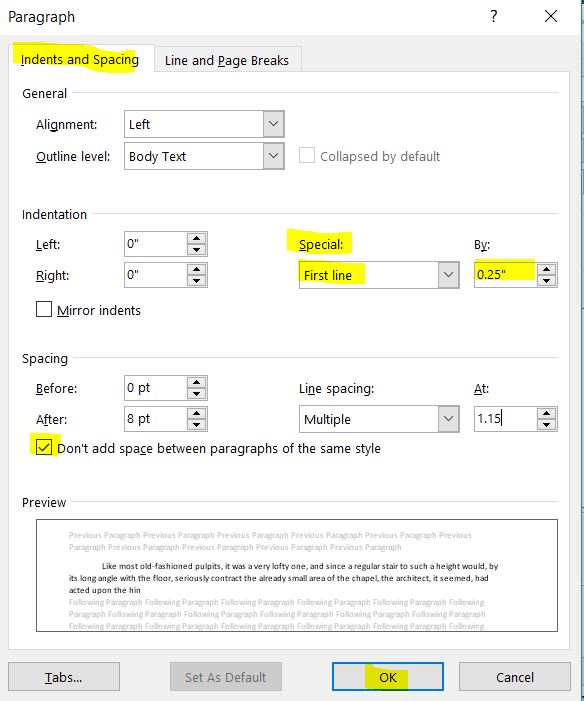
- ON MS WORD FORMATTING MARKS ARE DISPLAYED AUTOMATICALY UPDATE
- ON MS WORD FORMATTING MARKS ARE DISPLAYED AUTOMATICALY MANUAL
ON MS WORD FORMATTING MARKS ARE DISPLAYED AUTOMATICALY UPDATE
This will both apply the "Heading 1" style to your chapter heading (allowing the Table of Contents to detect it), and also update the Heading 1 style for your document to match the style you were using. Next, on the "Home" tab on the menu, go to the Styles section and find the style "Heading 1" (but don't click it yet, because clicking it will reformat your title to Word's default "Heading 1" style format).įor your first chapter heading, right-click the style "Heading 1" and select "Update Heading 1 to Match Selection". Step 1: In order for Word to identify the headers and subheaders for your Table of Contents, you need to apply the appropriate "Heading" styles to your chapter and sub-chapter headers.įor example, to mark a chapter title as a Level 1 Heading, first select the text that you would like to appear as the chapter heading in the Table of Contents by clicking-and-dragging your cursor over it to highlight it.
ON MS WORD FORMATTING MARKS ARE DISPLAYED AUTOMATICALY MANUAL
Setting this up can be a time-consuming process, but if you are writing a lengthy document that will go through several drafts, the automatic Table of Contents can save you a lot of manual revising each time your page numbers or chapter titles change. Word 2007 and later: You’ll find the pilcrow icon on the Home tab > Paragraph group.Microsoft Word has an automatic table of contents function that can automatically generate a table of contents for your document, provided you correctly tag the chapter headers and sub-headers that you wish to show in your table of contents.


You have to click the pilcrow icon ( backwards P) to turn the marks on or off: Yes, it does take a little while for your eyes to get used to seeing all these formatting marks if you’ve never seen them before, but it is worth doing.

Yellow: Arrows indicate that a Tab was inserted (in this case, the tab was automatically inserted as part of the outline numbering, but manually inserted tab marks look just the same).Apricot: Little black squares indicate that there are some paragraph settings applied to this paragraph (e.g.Meanings of the different highlight colors used in this screen shot: Here’s what text looks like with the formatting marks turned on: Manual layout was the biggest ‘crud’ issue, and it still is - people used tabs or spaces to center text instead of the centering tool line spaces between paragraphs were controlled by two Enters, not styles two spaces after a period were obvious standard spaces (not non-breaking spaces) were used to separate values and their units of measure soft line breaks line and page breaks and section breaks, etc. It took me a while to get used to viewing a document like that, but boy, did it show me a lot of crud in Word documents, especially those written by others. I didn’t believe him.įast forward only a year or so later, and I was a convert to showing all those formatting marks.

He assured me that he always worked that way and that it was a really efficient way to work. I reeled back in horror and asked how on earth he could read the text with all that other stuff messing up his view of it. And all I could see were these horrid little dots between every word, funny backwards P markers at the end of lines, long arrows between step numbers and the first letter of the step text, etc. Most of Word’s power was well and truly hidden from me.Ībout 15 or more years ago (yes, I’ve been using Word a LONG time), I was looking over a work colleague’s shoulder discussing a document he had displayed on his screen. For the first few years I used Word, I just used it ‘out-of-the-box’ and changed very few settings - like much of the population, I guess.


 0 kommentar(er)
0 kommentar(er)
